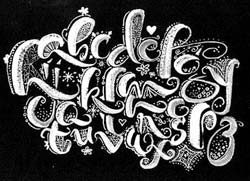 When you pick up a pen and start to write, you’re not merely creating abstract strokes; you are sketching the trees, hills, and horizons—what your ancestors observed.
When you pick up a pen and start to write, you’re not merely creating abstract strokes; you are sketching the trees, hills, and horizons—what your ancestors observed.
A study conducted by American scientists examined over 100 writing systems throughout history. These systems include alphabets, symbols, common geometries, and signs based on existing patterns in nature.
“Our research indicates that there are hidden rules that shape the appearance of these pictorial symbols,” said the team at the California Institute of Technology. This provides evidence that humans have chosen pictorial signs that correspond to their natural environment.
The researchers explained that the shapes of written characters were chosen to enhance recognition, even if this comes at the cost of writing efficiency. In other words, we use letters in their current form because they are easy to read, although they may not be easy to write. This contrasts with shorthand writing, where the form is chosen for speed rather than reading efficiency.
Dr. Mia Stephens at the University of South Australia, a language lecturer, noted that the team distilled written languages into a set of basic shapes, including T, L, and X. “You can discover similarities in human writing systems, so you can stretch, distort, and disrupt each letter, yet they still maintain the same number of strokes and basic lines.”
However, Stephens also believes that the nature of written language will change in the future. “This study looks only to the past, while the future of writing will be entirely different because we have keyboards now.”
M.T.


















































